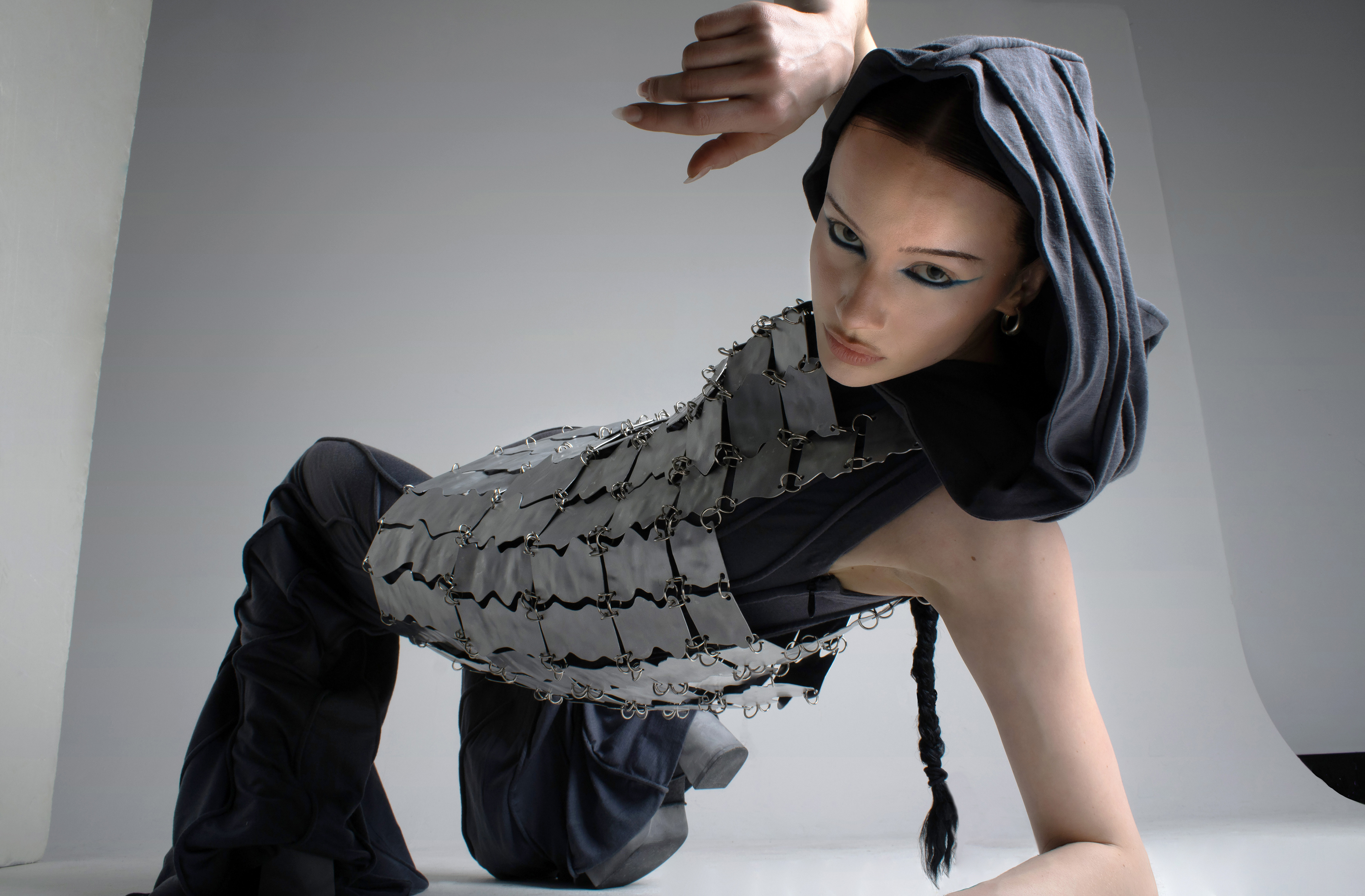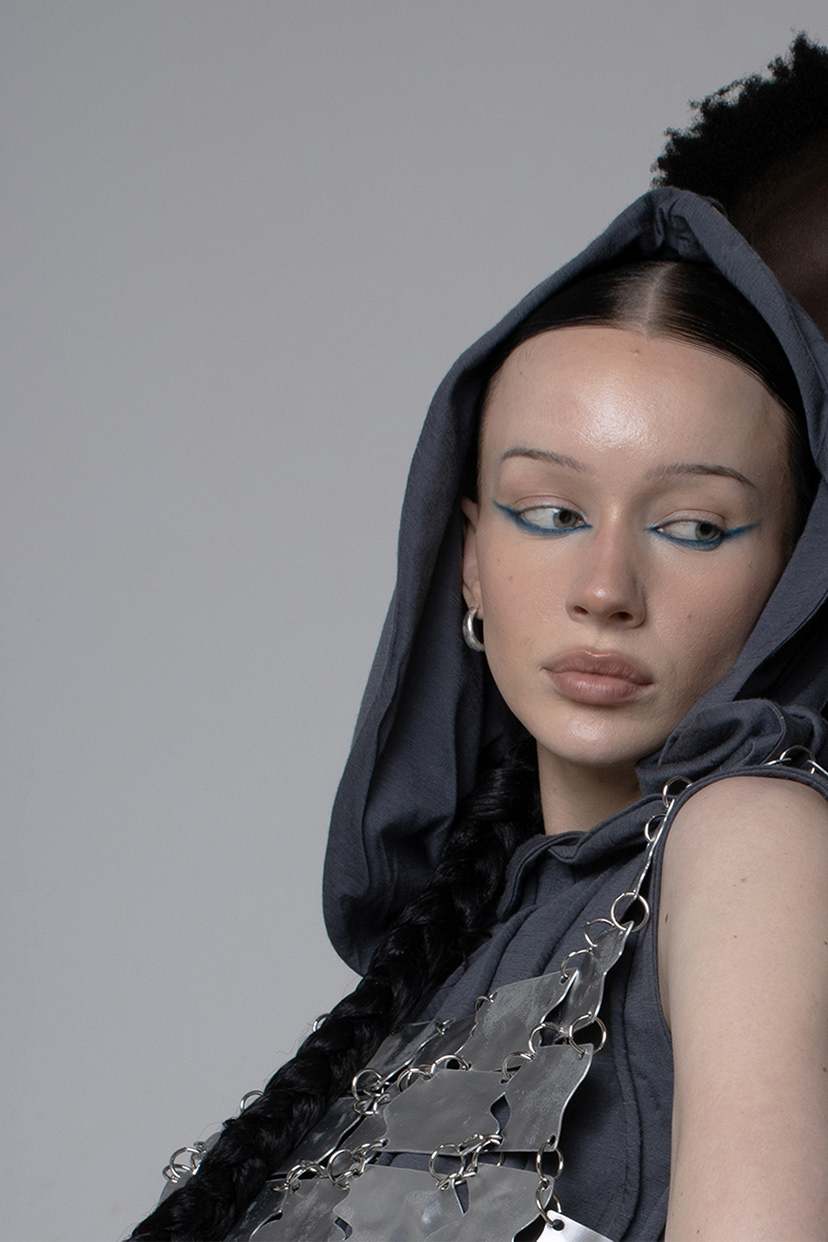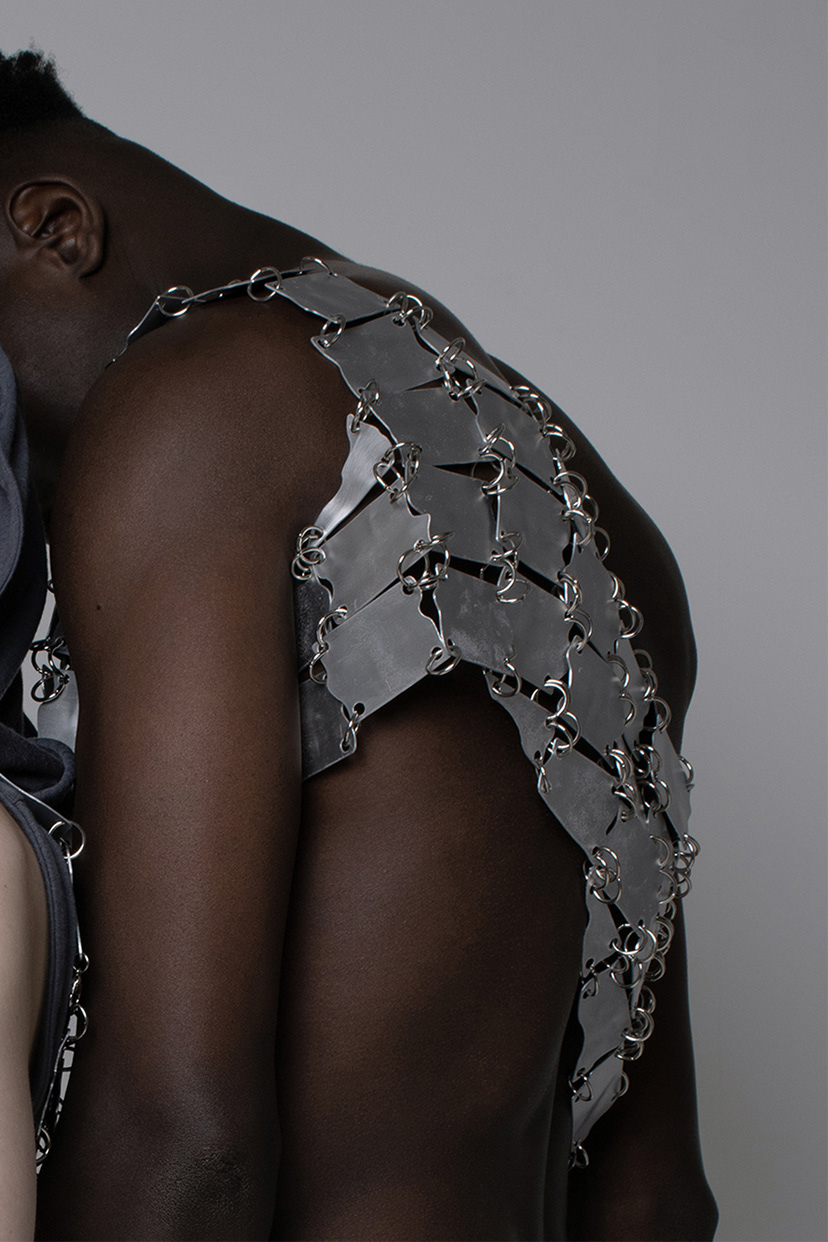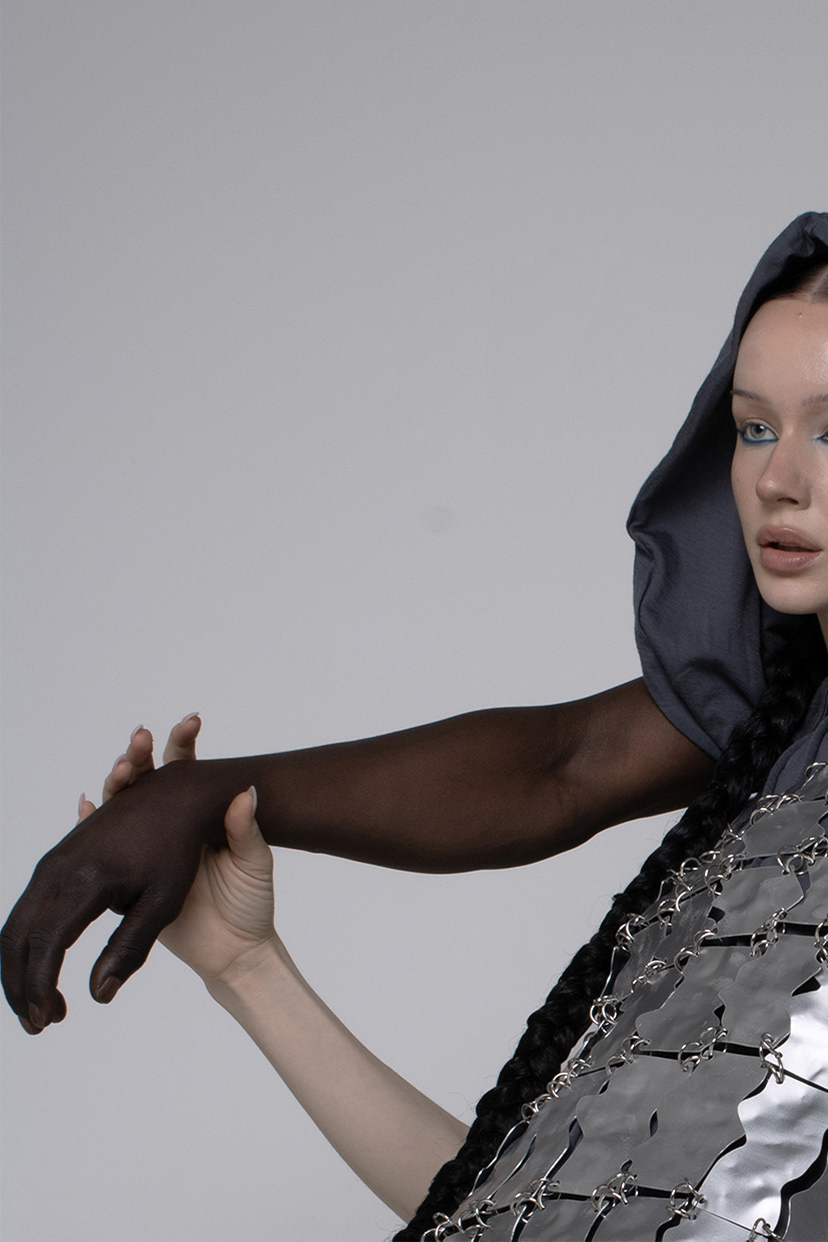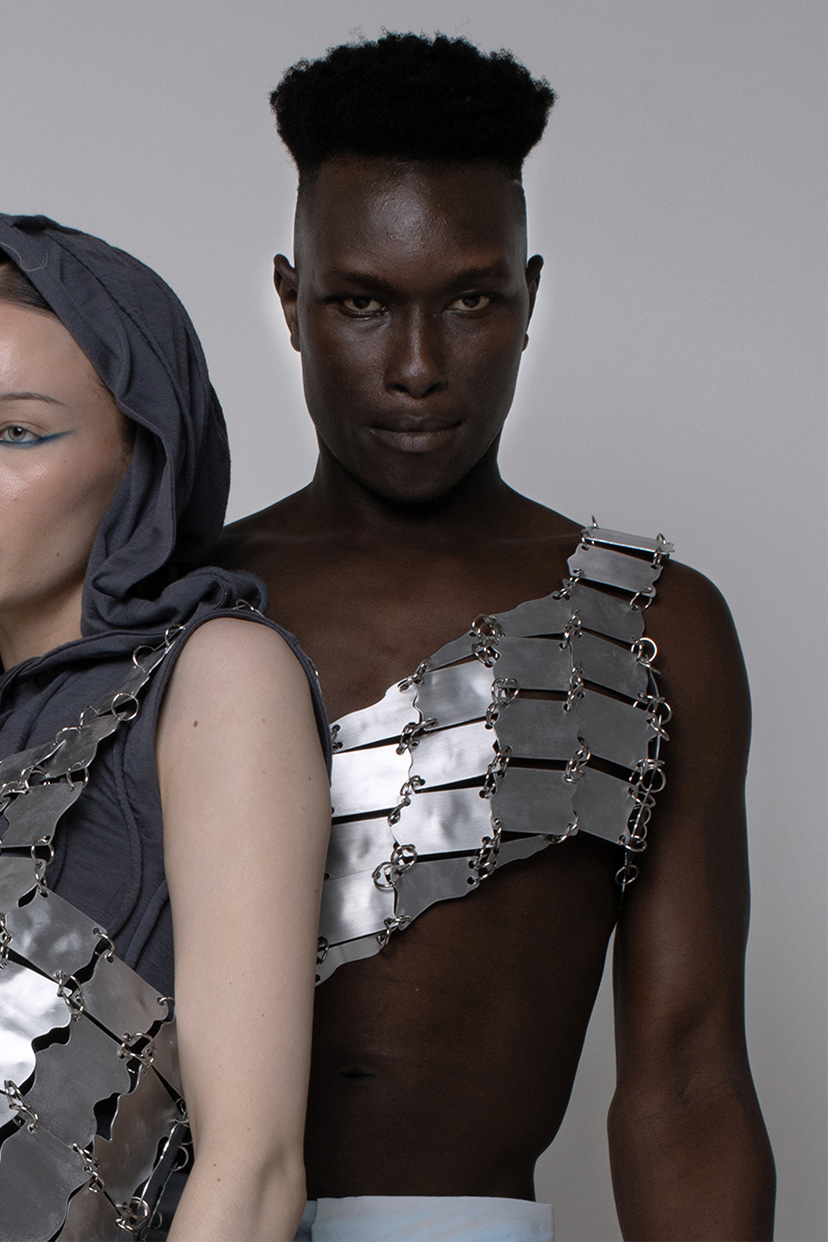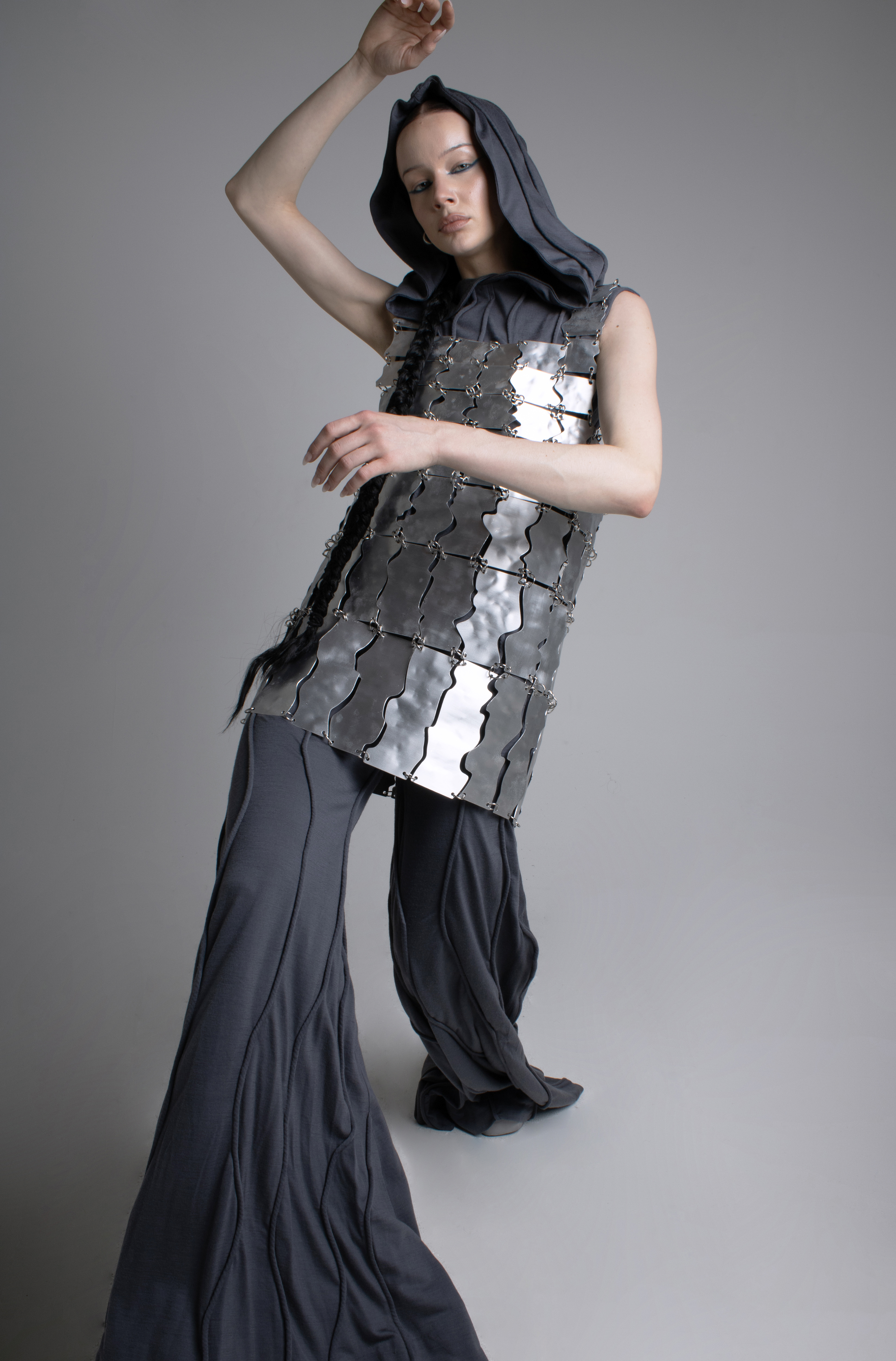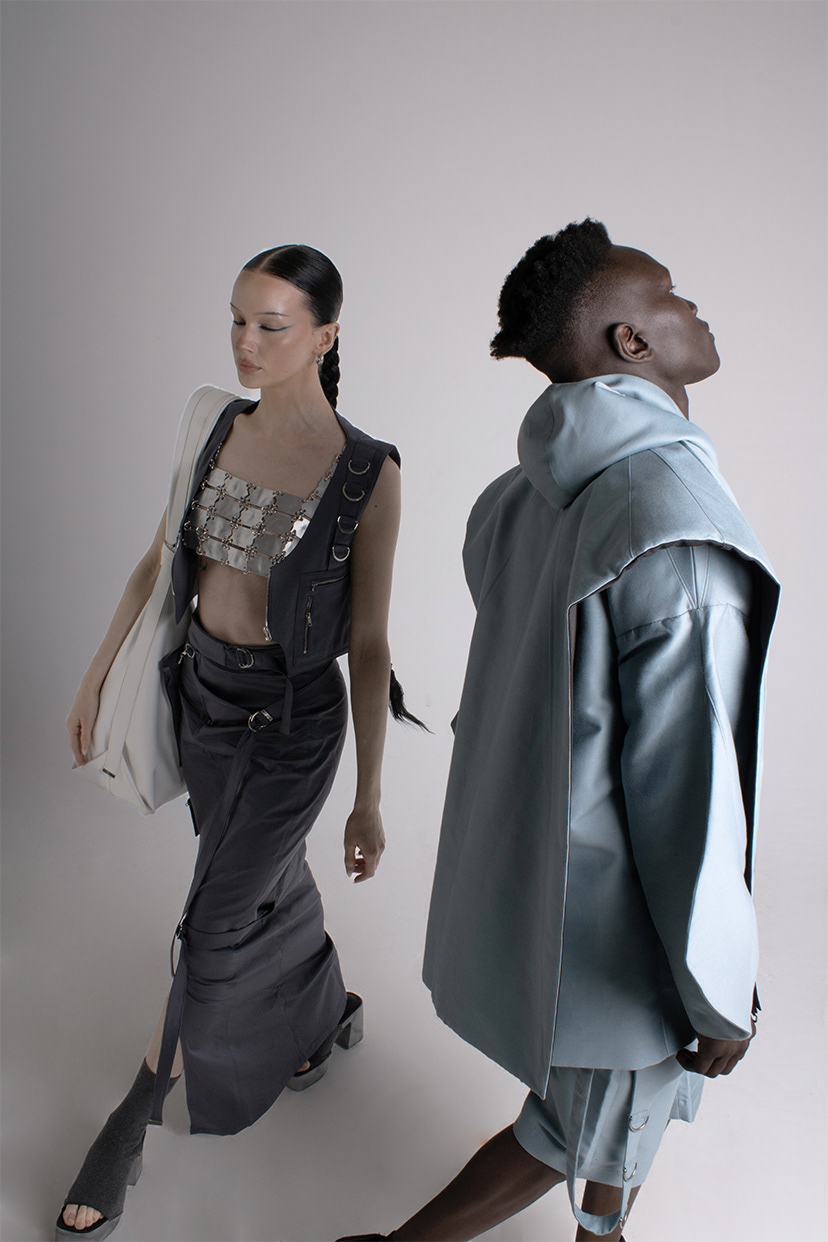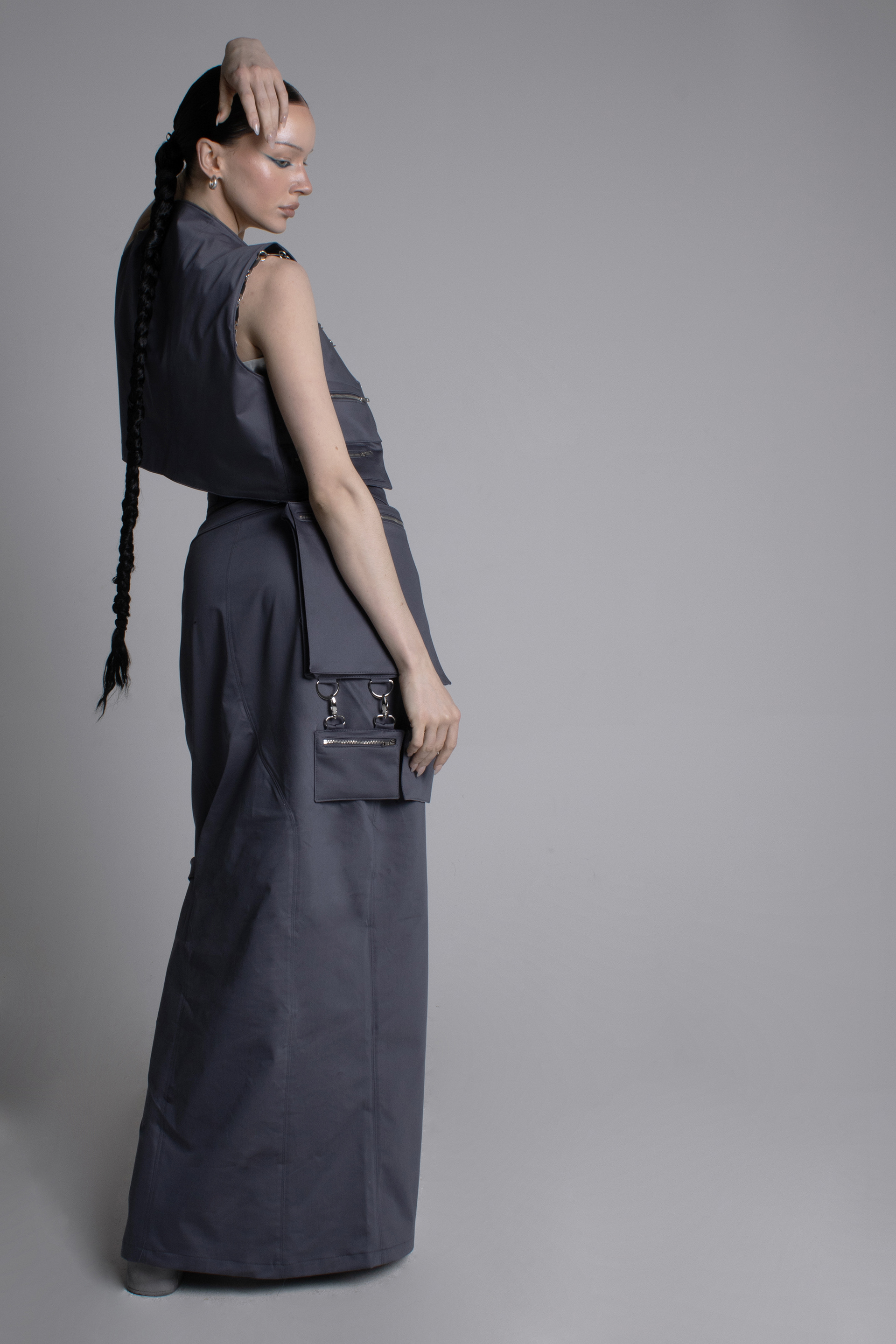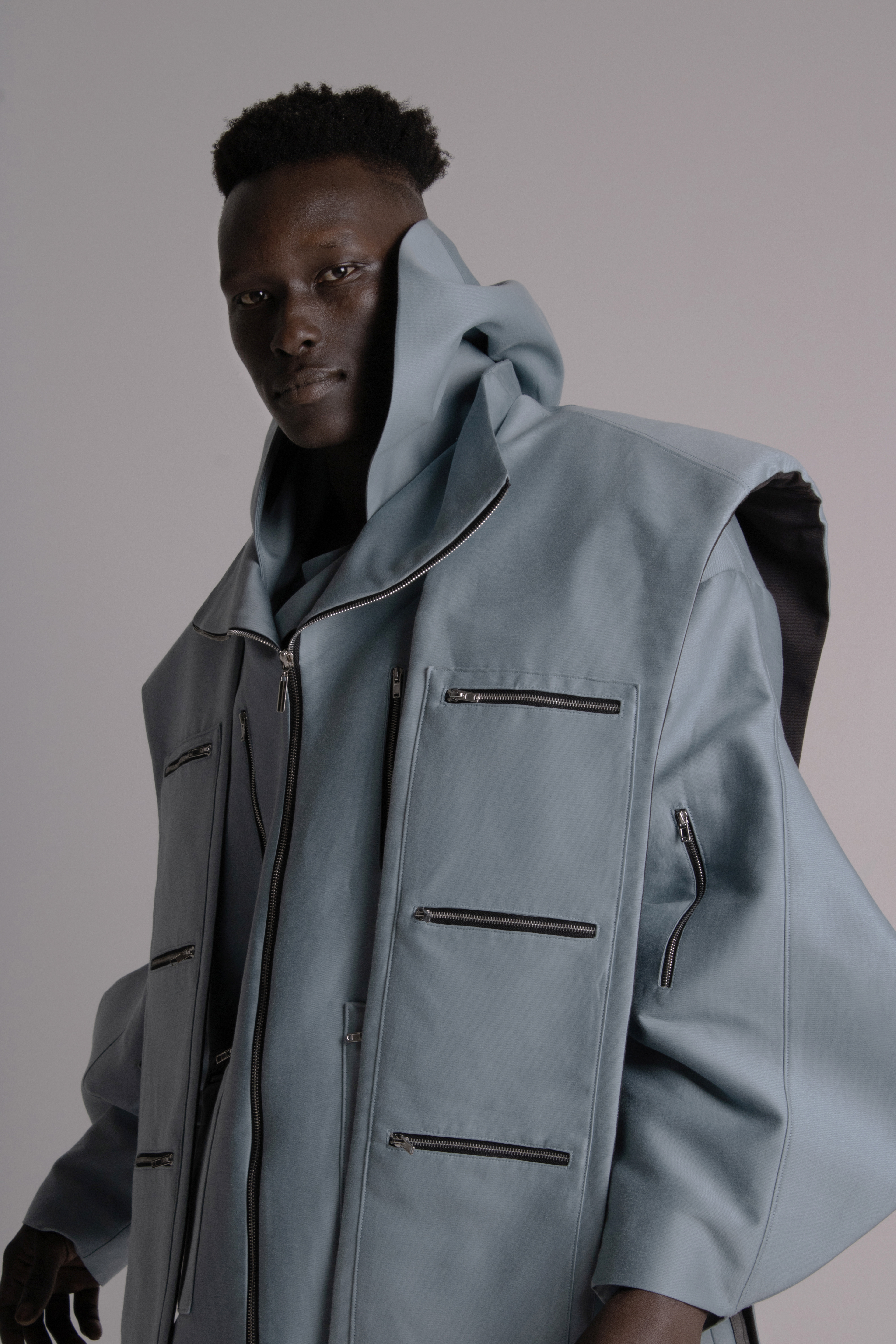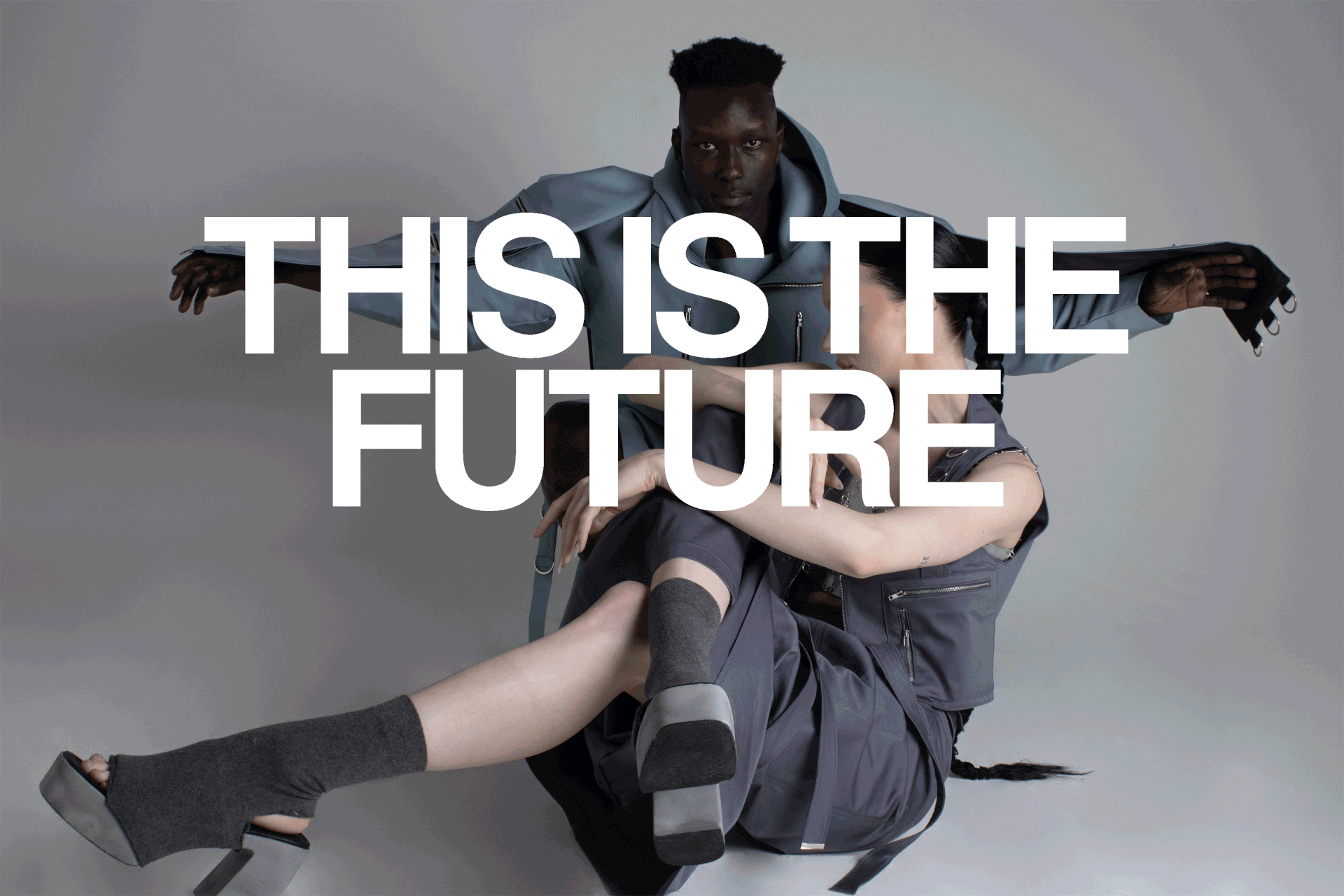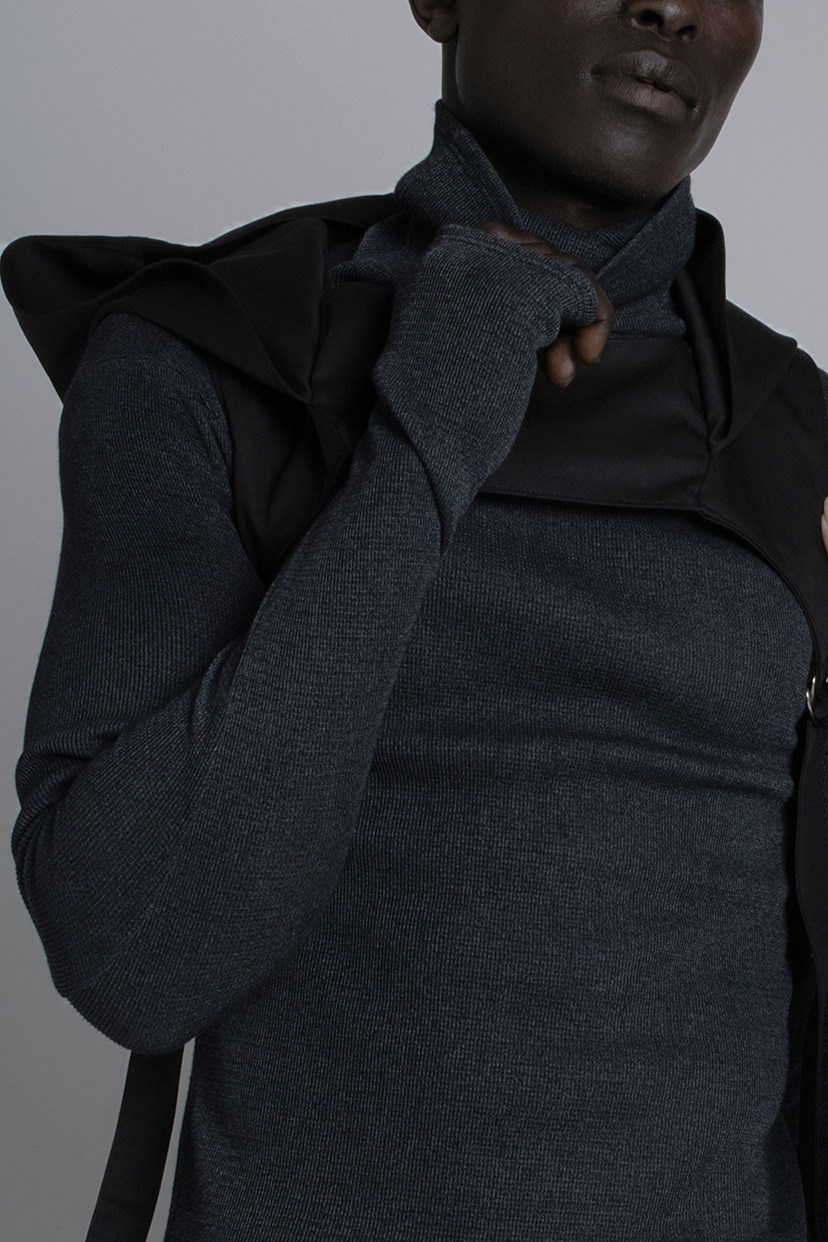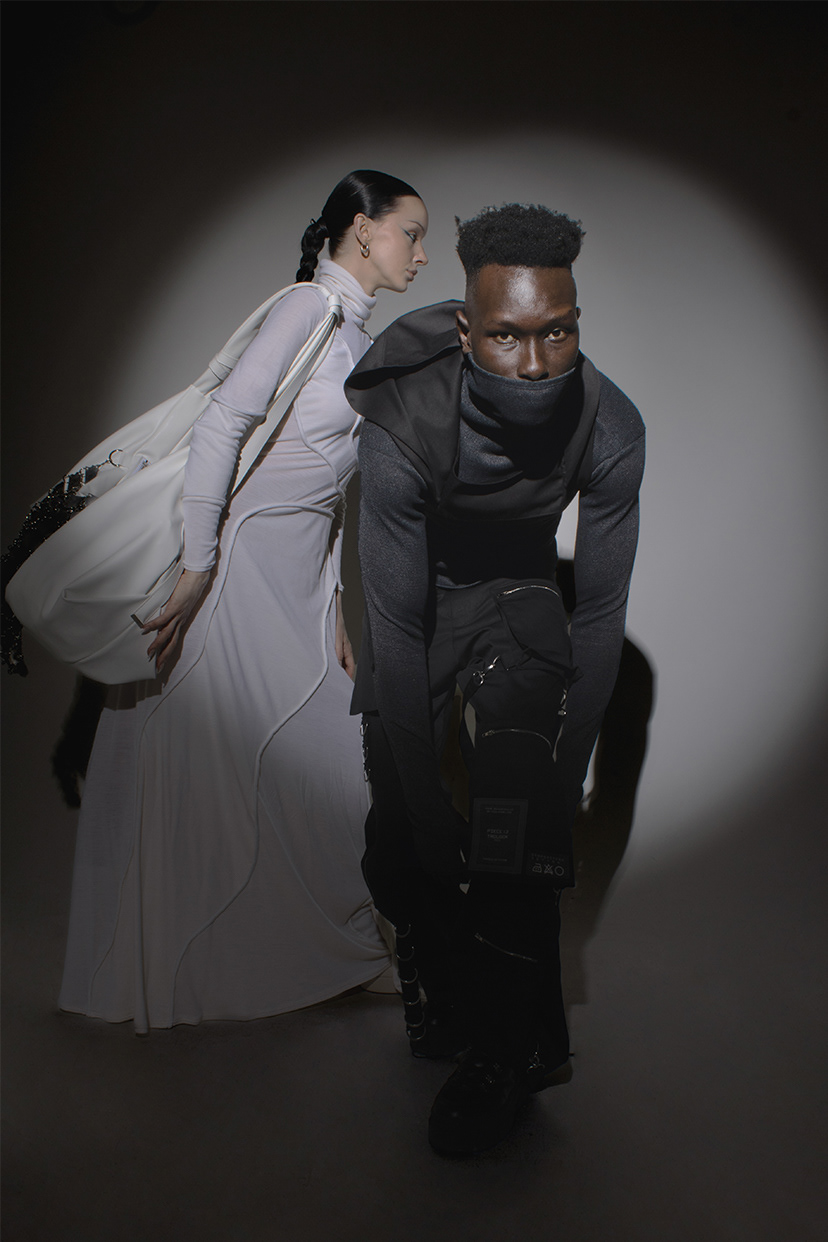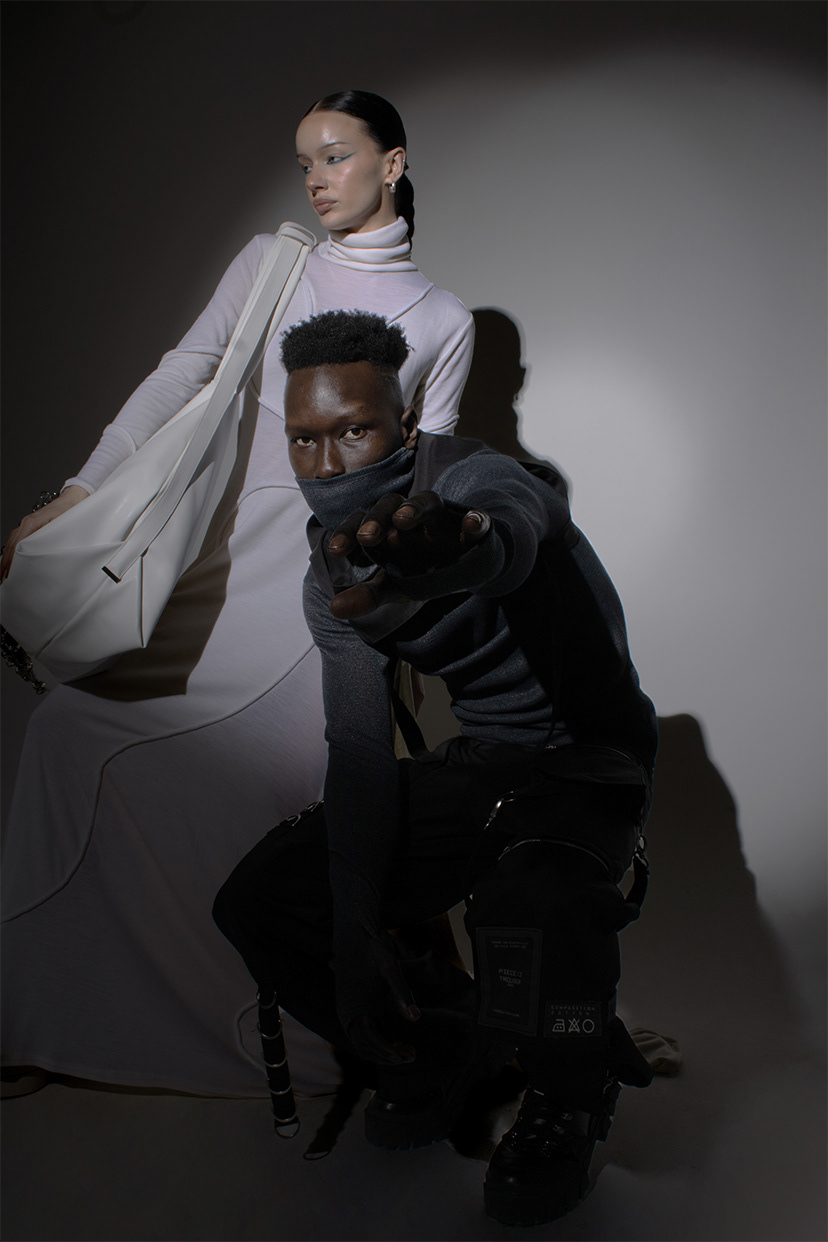MIA HENDREN
DESIGNER BIO
Mia Hendren is an emerging Fashion Designer who studied at Whitehouse Institute of Design in Melbourne, Australia. She typically takes inspiration from the cogitable concept of a pessimistic future and how it will affect the Earth and the Fashion Industry in an end-of-the-world way. She honed her personal design style in response to this idea through the use of adding dystopian themes and utilitarian codes to wardrobe staples, while merging utopian elegance to harmonise the collection. With aspirations to contribute to the ethical fashion industry, employing the use of slow fashion and environment-aware fabrics while producing designs that are forward-moving is imperative. Aspects of the collection are designed and made genderless, allowing the wearer to make a connection to the piece, their place on the earth, and as a being.
DESIGN STATEMENT
Neo is creating “a new and different form of something that existed in the past” (The Briannica Dictionary n.d). This idea is creating newness by taking inspiration from planetary thinking and Earth’s minerals to elevate and detach its past meaning. The collection creates an unearthly vision that disconnects from reality and follows an illusion with no limitations— exploring the ideas of distortion of shape within the planet and the notion of perversion within one’s self. It uncovers a future that contrasts sleek utopian elegance with end-of-the-world dystopia to revive the idea that “we are part of this planet, not just on it” (Steffen 2012). A vision of our world disarticulates and becomes merely a planet with people on it. The illusion of a perfect place becomes an imagination for the mind, with no boundaries on what it could be.
The collection utilises the Earth’s creations to produce fabrications. This is seen in the form of smooth, yet structured cactus leather, soft cotton blends, textured merino wool and rugged aluminium made from minerals to tie the collection together while instilling a dystopian element. A custom-printed polyester brings elements of utopia through the print and light colours used.
